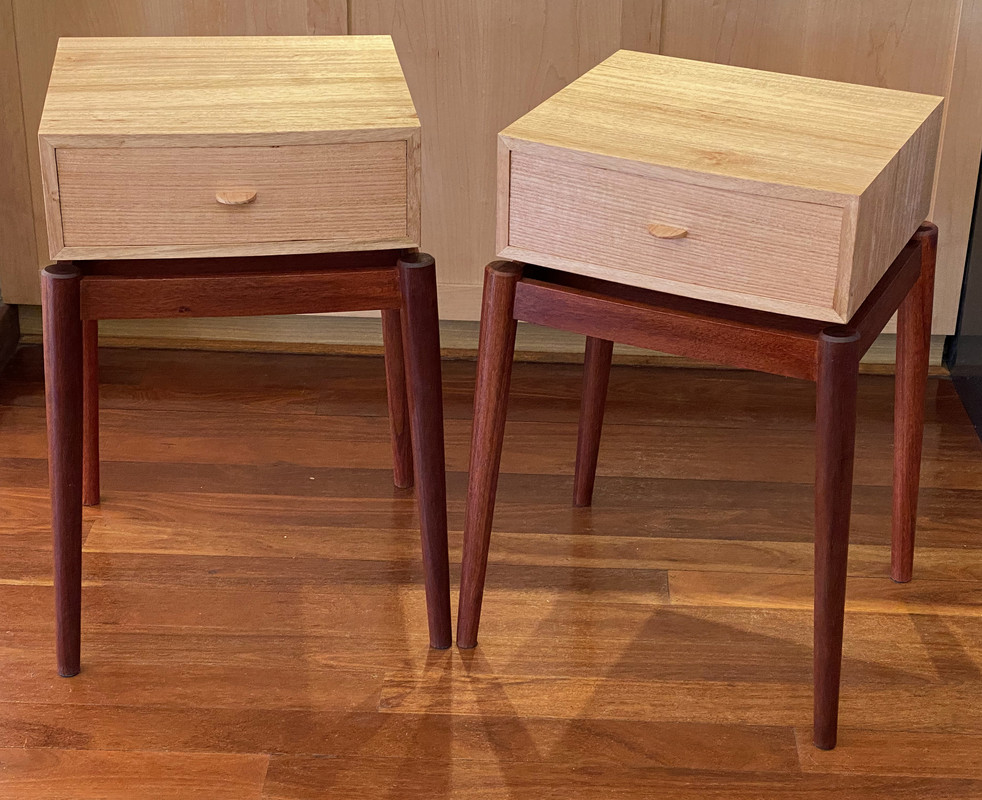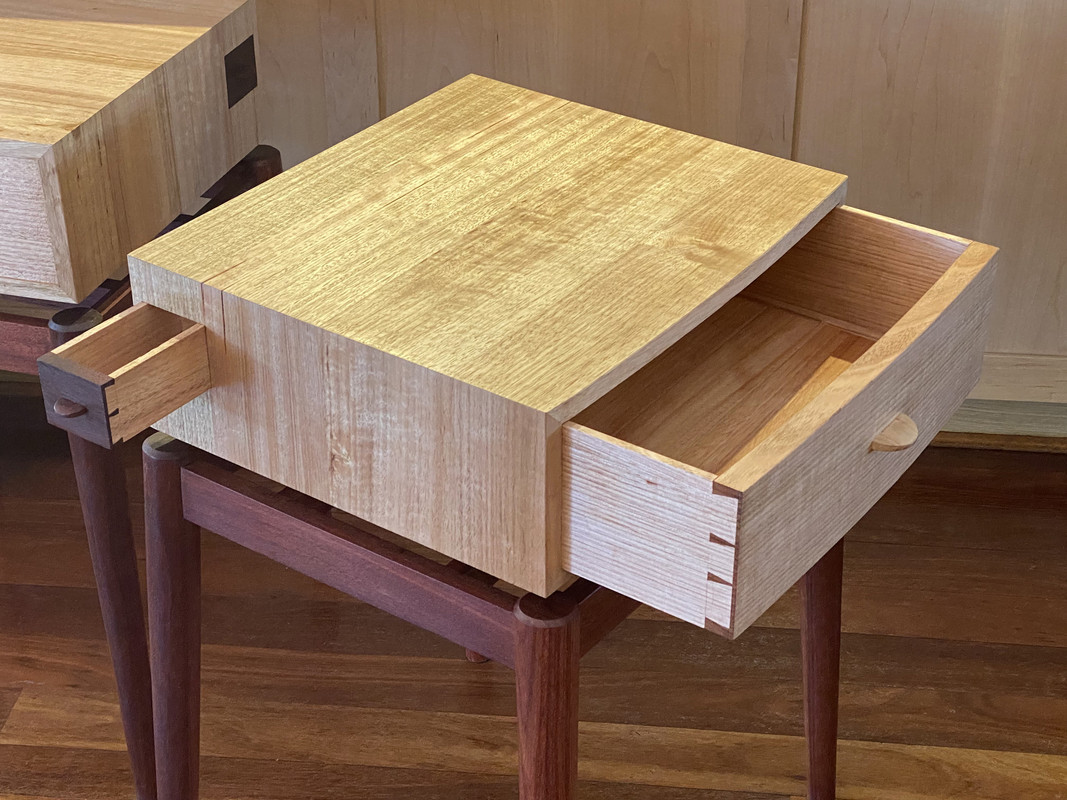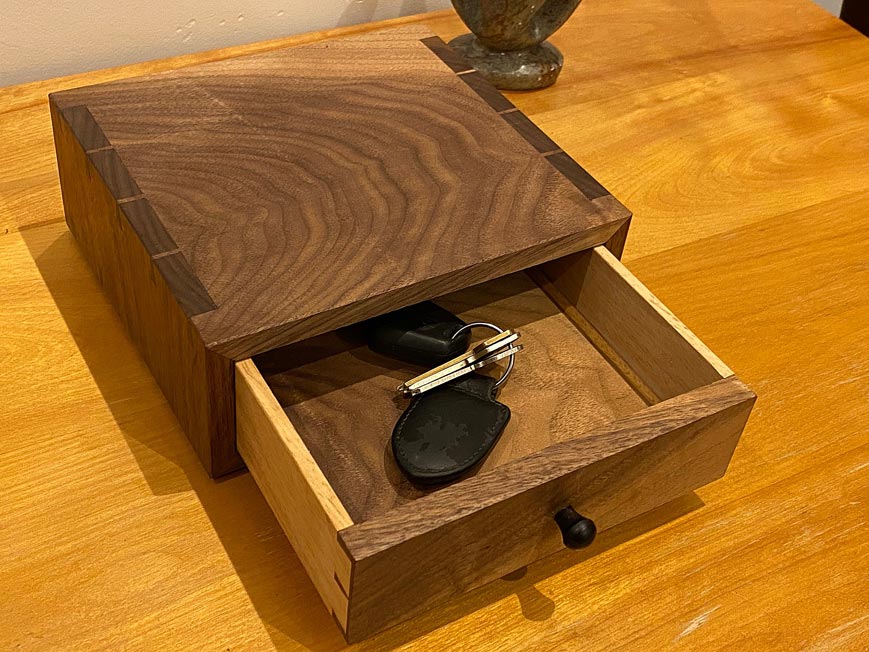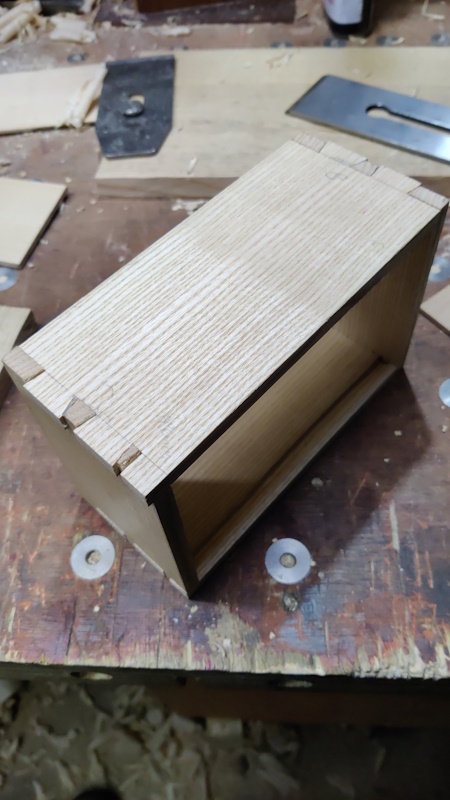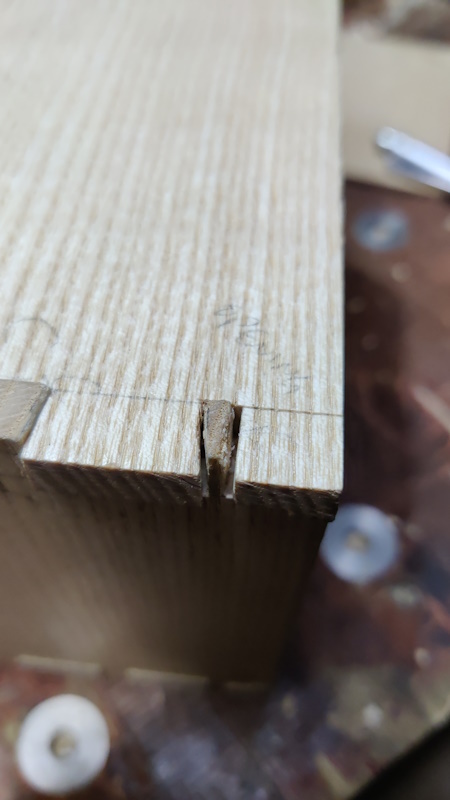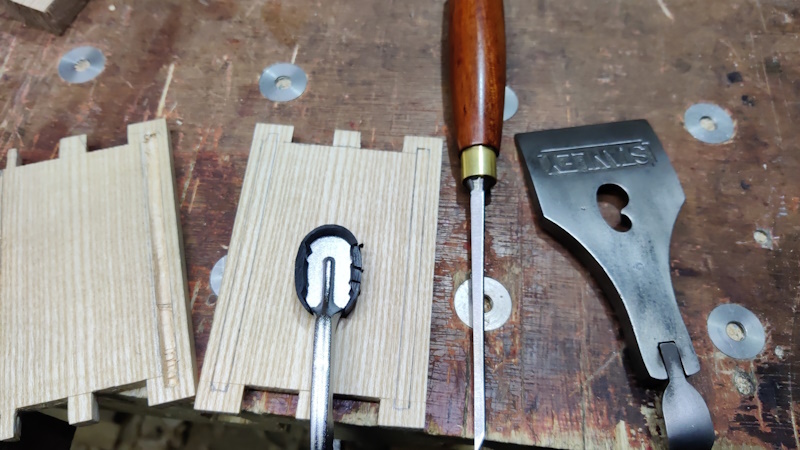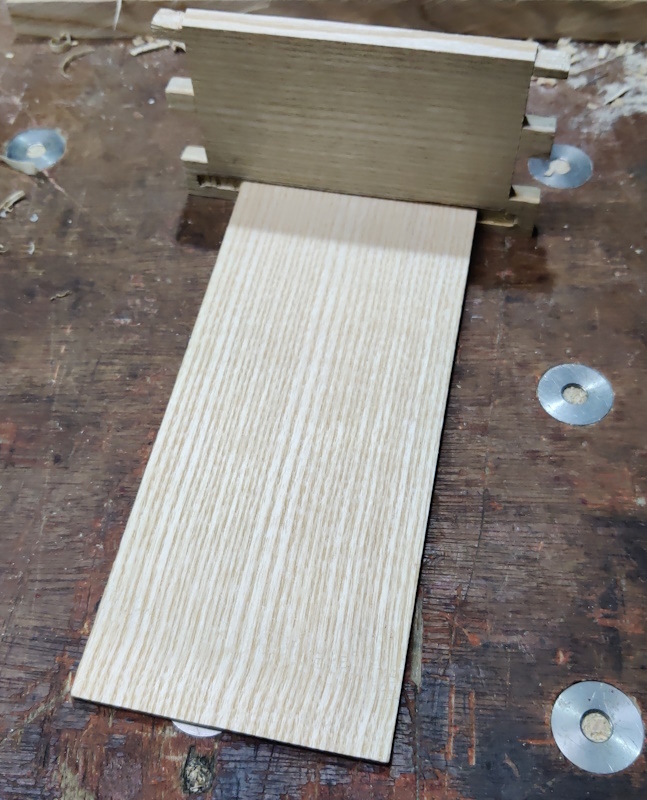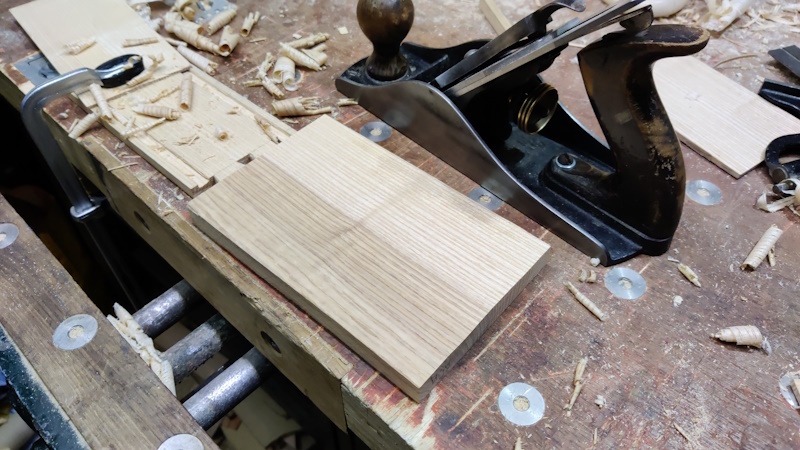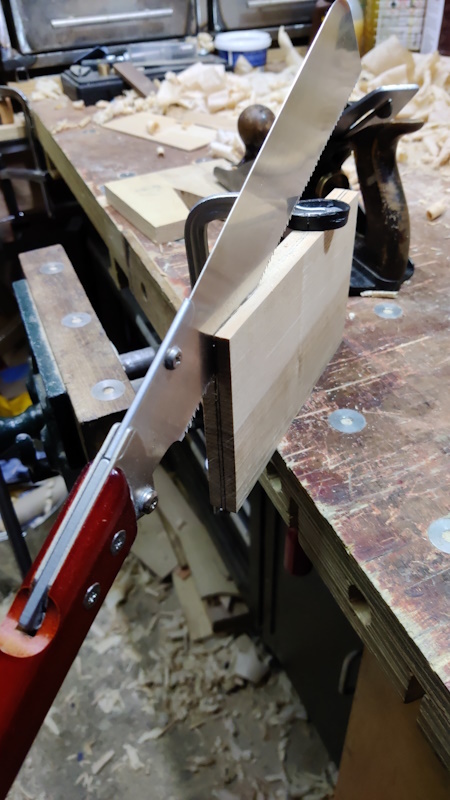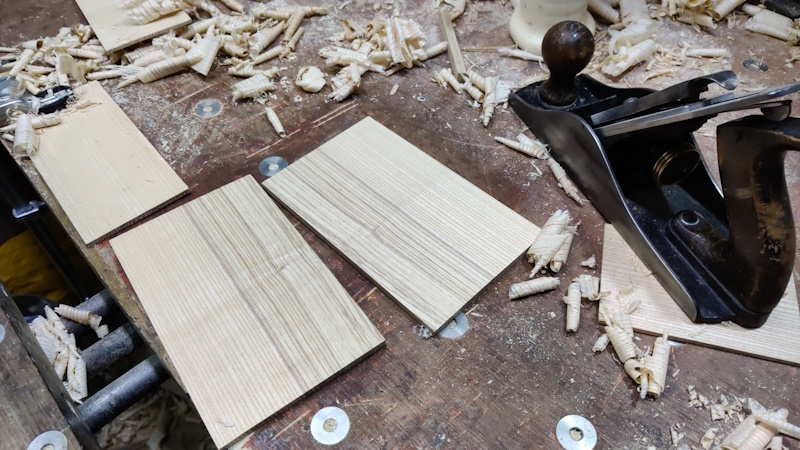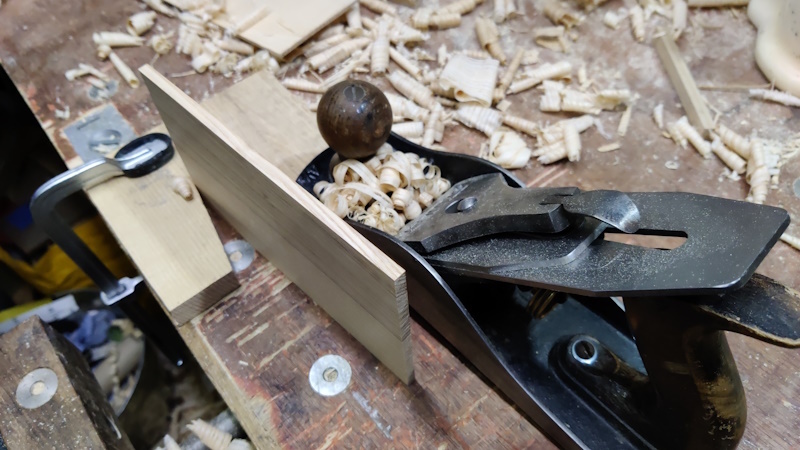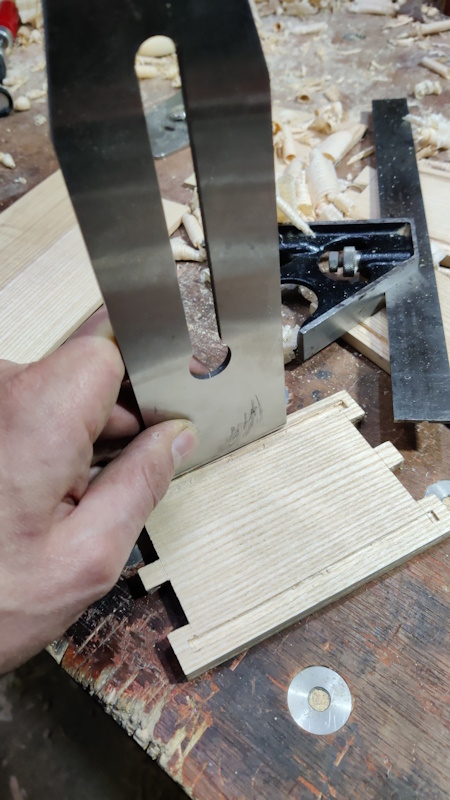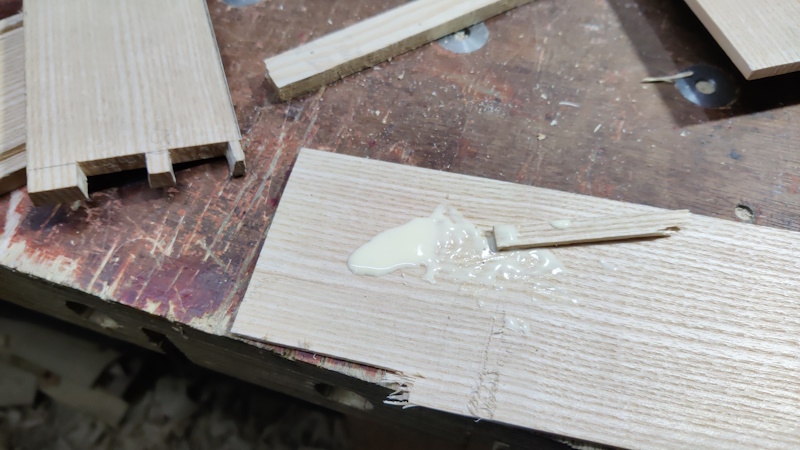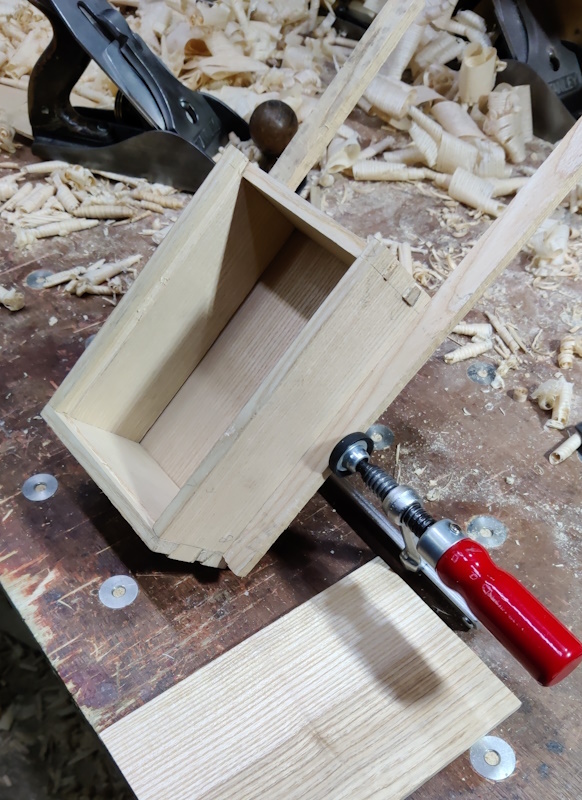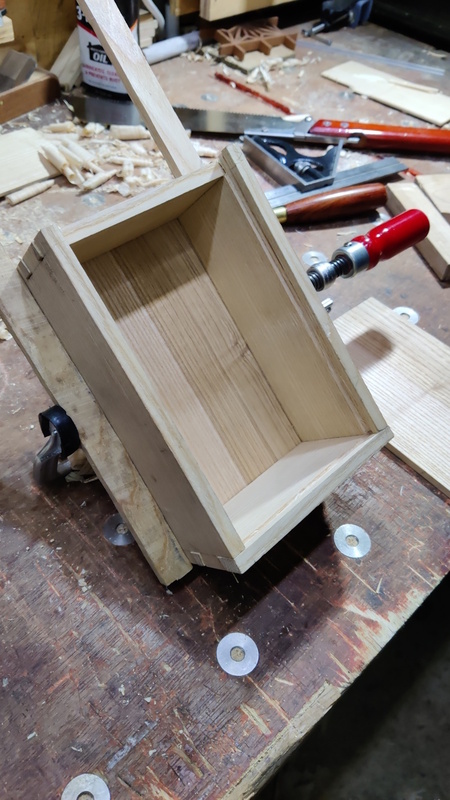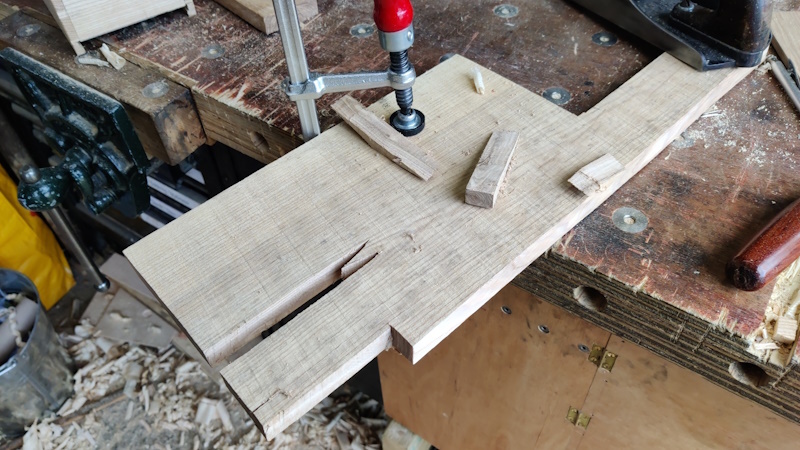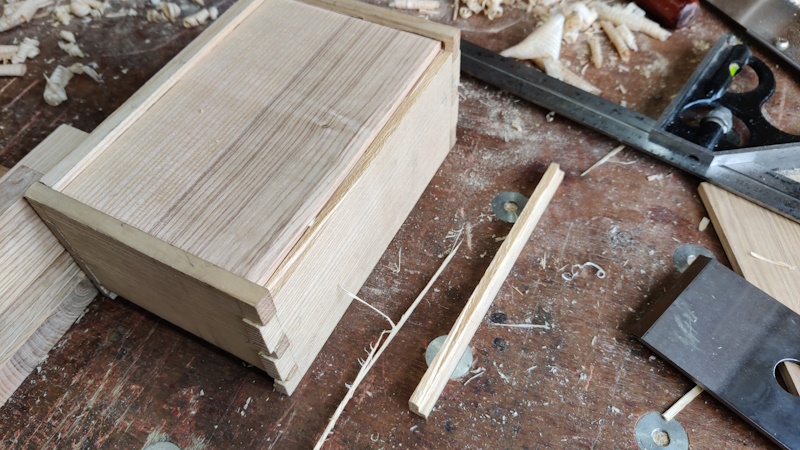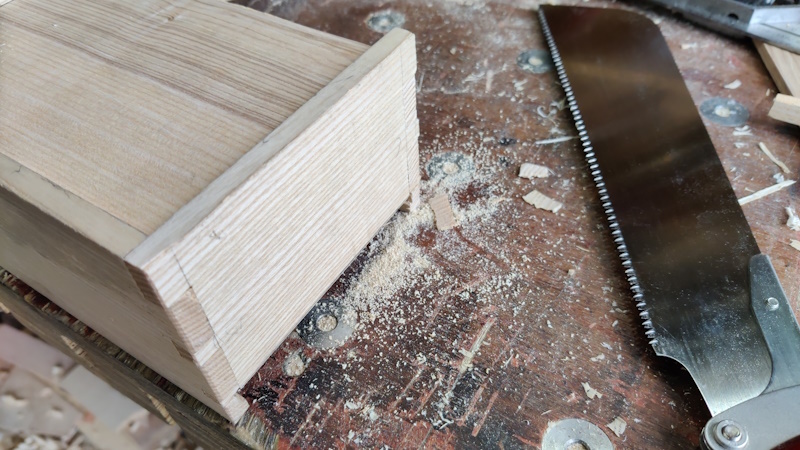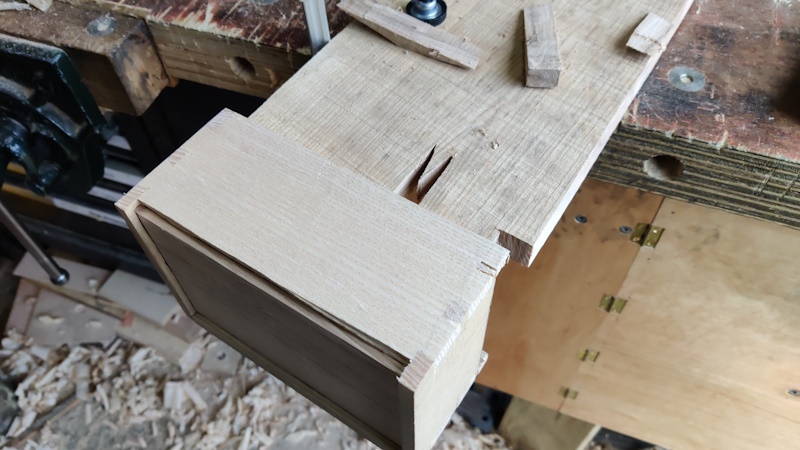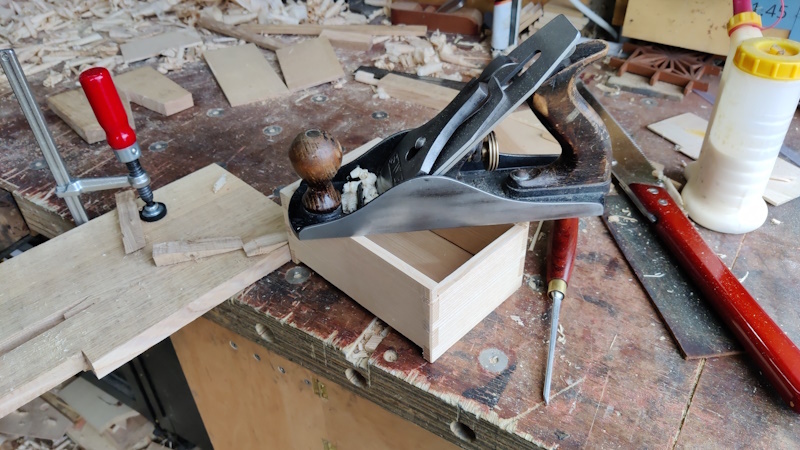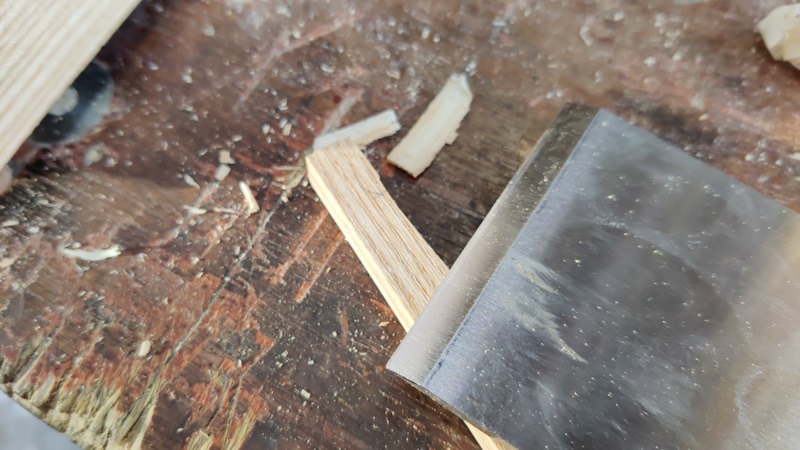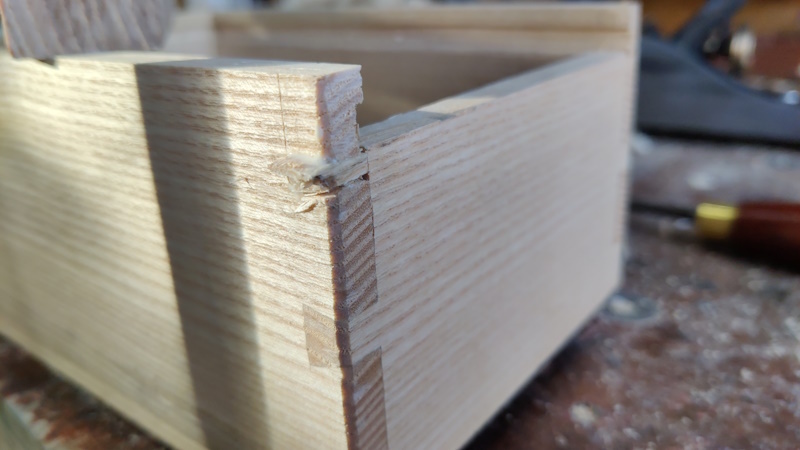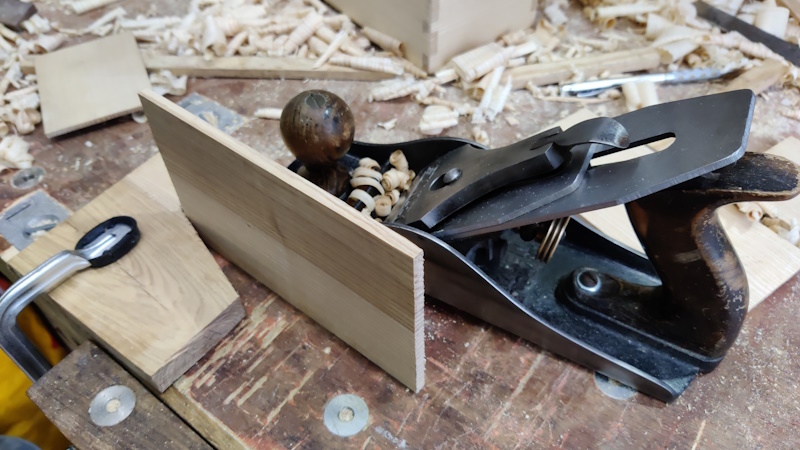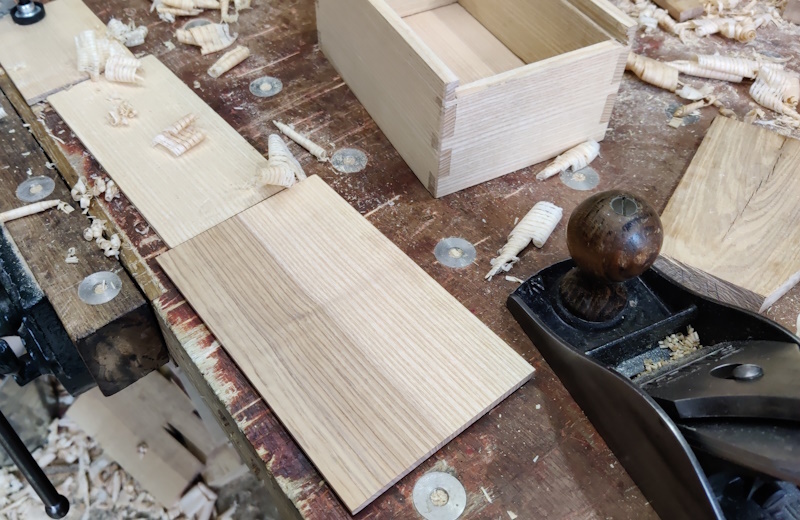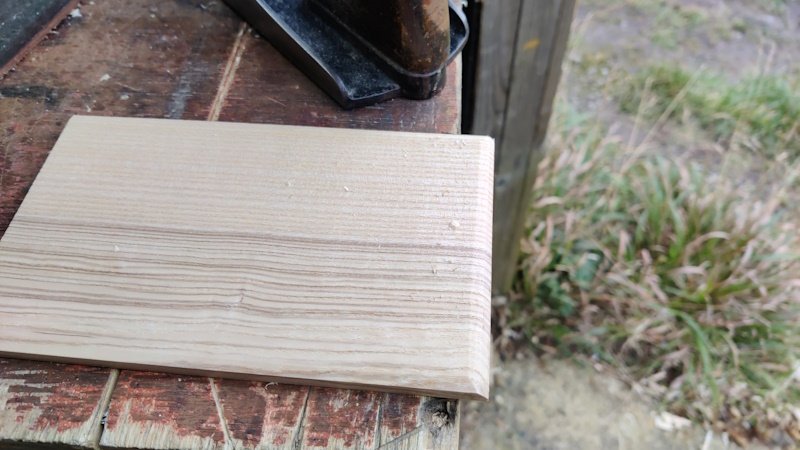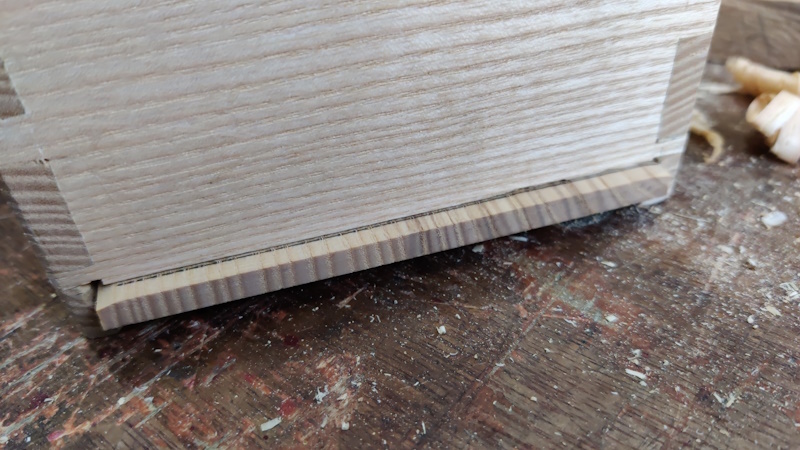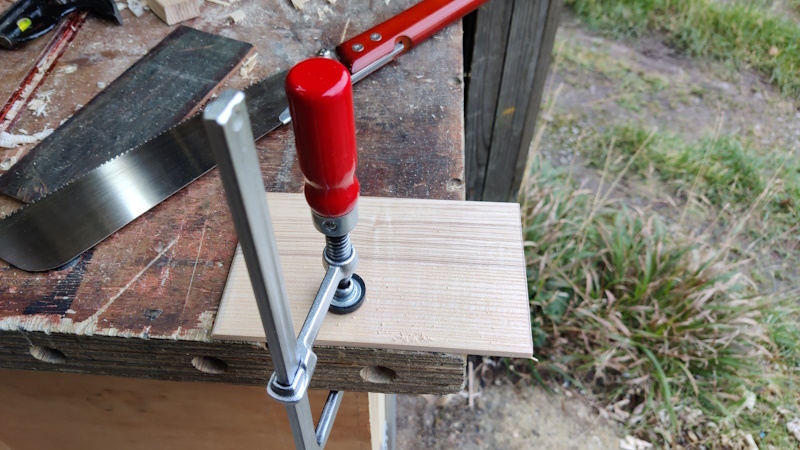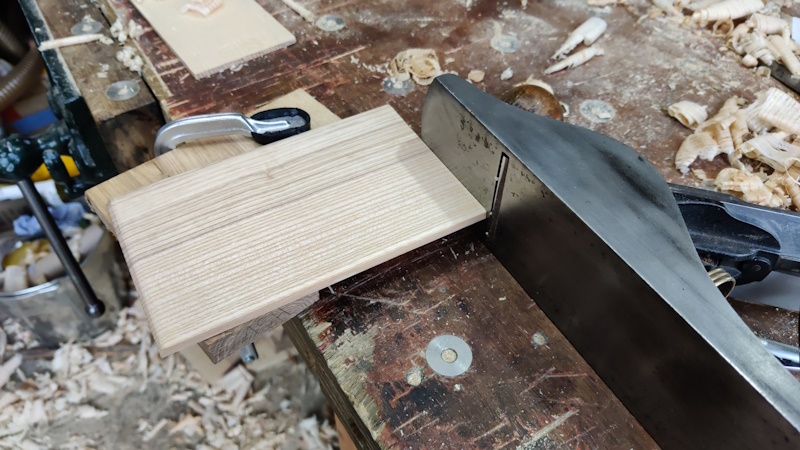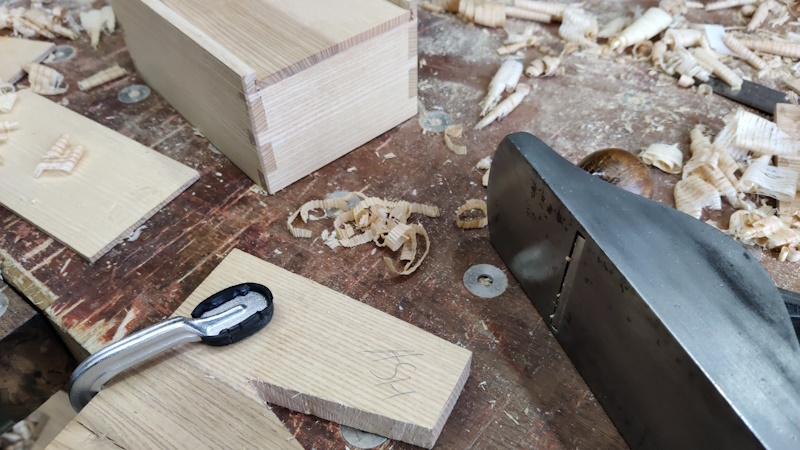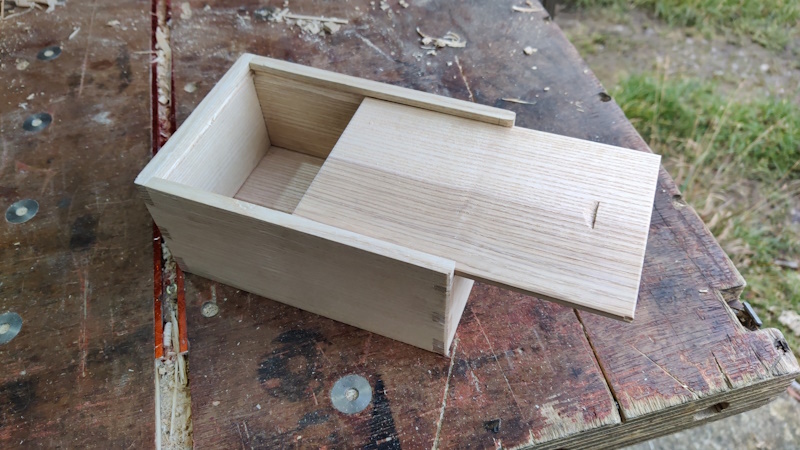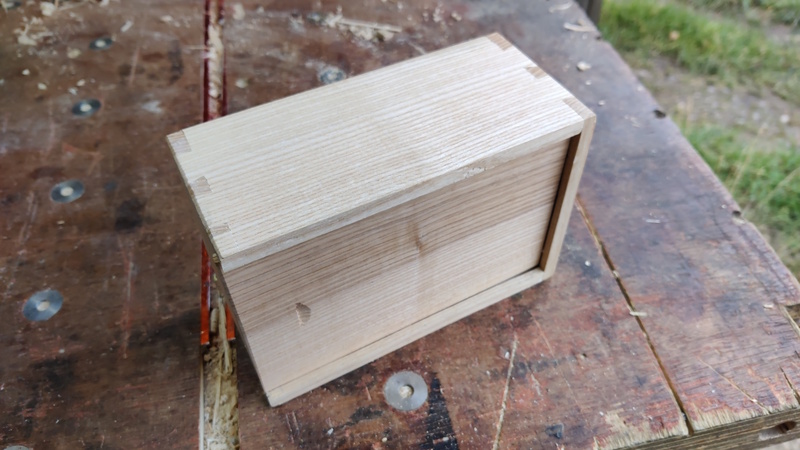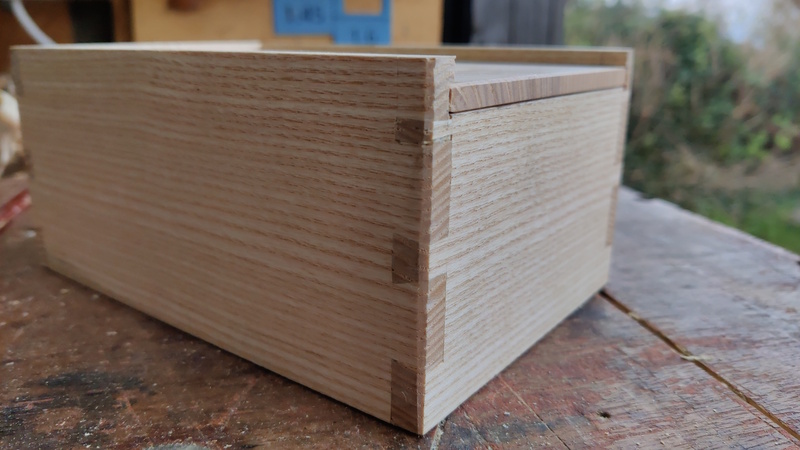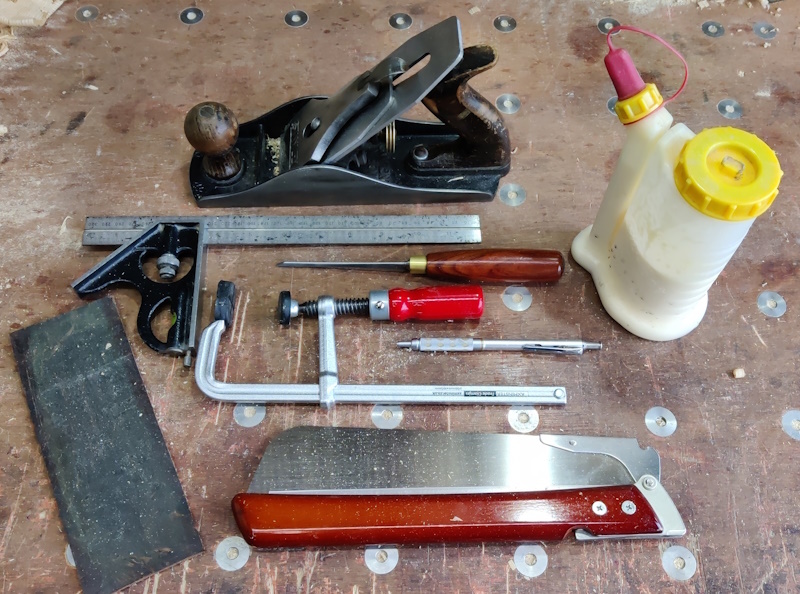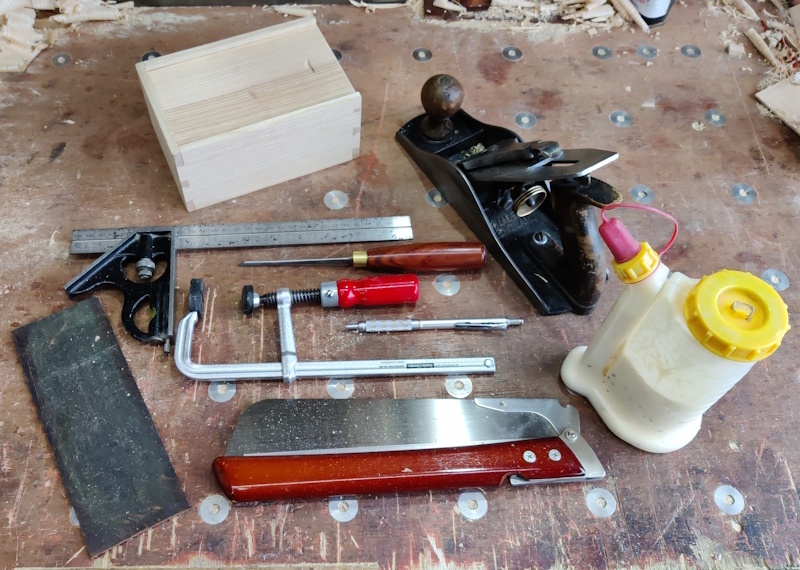Dr Al
Established Member
Add a cutting gauge and gennou to my previous list. Include a workbench, but I think that is missing the point of a "minimal tool build".
The box below has mitred corners and needed a shooting board (Donkeys Ear) and plough plane. Cut to rough size with a backsaw, shoot to final dimension, add the mitres with the DE, and plough the grooves.
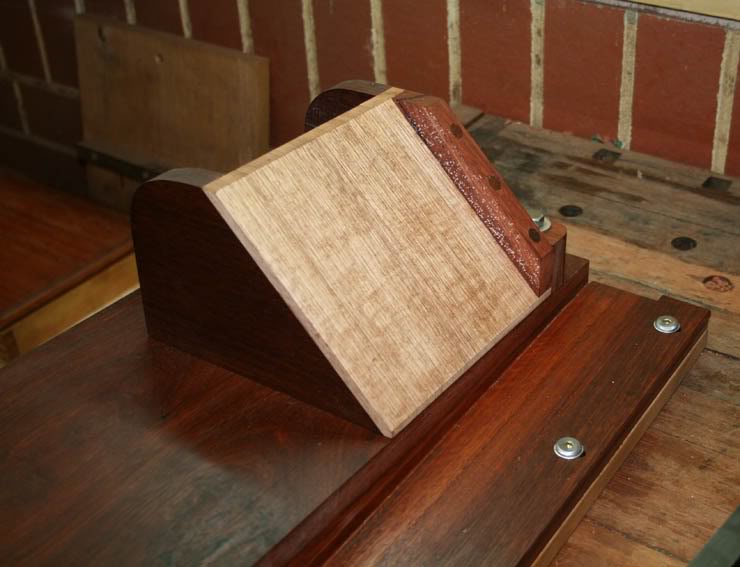
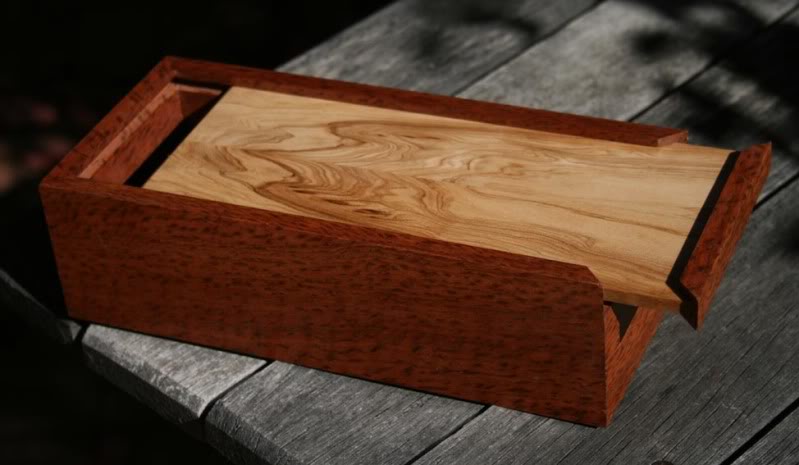
As described in the first post, a workbench is assumed (and doesn't count), but only as a surface to clamp to / work on.
Another beautiful box Derek, but I still don't know the tool list, so I don't know whether it qualifies as a "minimal tool" build. Without much to go on, I'll guess what you used for this:
- Bandsaw to resaw the rough-sawn timber down to thickness and to cut to width (power tool, so counts as 5).
- #4 Smoothing plane to sort out the bandsawn faces and to plane the edges square
- Bench dog to support the work while planing the faces
- Vice to hold the work while planing the edges
- Ruler to measure the board lengths
- Pencil or knife to mark the board lengths
- Backsaw to cut the timber to length
- Bench hook to support the timber while cutting to length
- Donkey's Ear shooting board (used with the already-listed #4 smoothing plane) to shoot the mitres
- Plough plane to plough the grooves
- Sticking board to support the work while ploughing the grooves
- Glue
- Brush to apply the glue
- Wet rag to remove squeeze-out (which is hard to avoid on a mitred joint)
- A single grit sharpening stone to give the smoothing plane a touch up before planing the surfaces (I'm assuming you used the #4 smoothing plane again to clean up after gluing rather than adding various sandpaper sheets into the mix)
- Oil as a finish
- Brush / sponge to apply the oil
- Paper towels to clean up excess oil
- Abrasive of some sort (scotchbrite, 0000 wire wool, worn-out sandpaper) to de-nib between coats of oil
The point I'm trying to make is that it's unlikely that you'll find a box you made in the past that will have a particularly good score. No-one in their right mind would go to the lengths that I've gone to in this build to minimise tool use, so the chances of there being something you did in the past that has an impressive tool count is quite slim.




